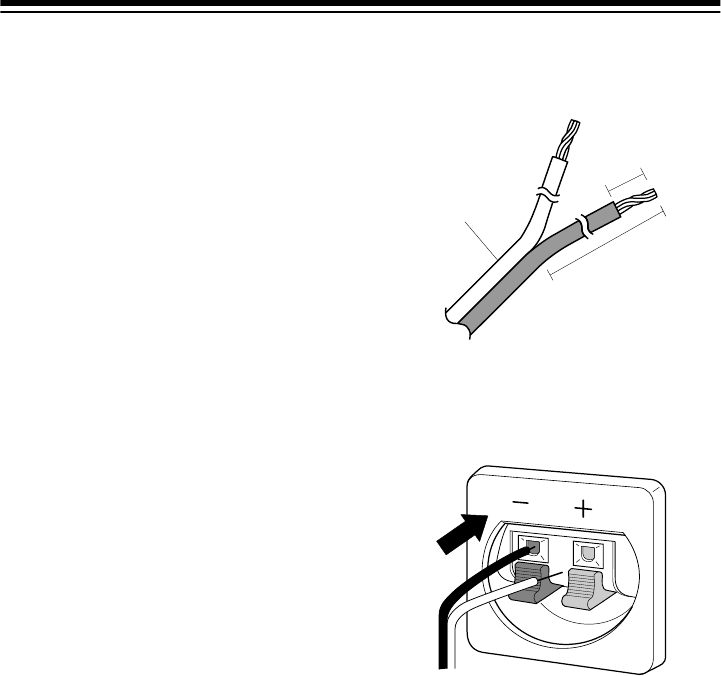
2
CONNECTIONS
Your local RadioShack store has a
wide selection of speaker wire. We
recommend you use color-coded or
marked wire to help you correctly con-
nect the wire. Most color-coded wires
have a stripe running down one of the
conductors and marked wires have
ridges along one of the conductors.
With the speaker in its approximate lo-
cation, measure the distance from the
speaker to your receiver/amplifier.
Cautions:
• Take care never to exceed the
speaker’s maximum power rating
(see “Specifications”).
• To avoid any damage to the
speaker or amplifier/receiver, turn
off the amplifier/receiver before
making connections.
Use 18-gauge speaker wire (not sup-
plied) for distances up to 50 feet. For
greater distances, use 16-gauge wire
(not supplied).
Note:
For maximum bass response
and the best overall performance, con-
nect your speaker so it is in phase (+
to +, and – to –).
1. Separate the wire’s two conduc-
tors at both ends for a length of
about 4 inches.
2. Strip the insulation from the ends
of each conductor to expose
1
/
4
inch of metal wire and twist the
loose strands.
3. Press the tab on the speaker’s
negative (–) terminal and insert
one of the wire ends. Then release
the tab.
4. Press the tab on the speaker’s
positive (+) terminal and insert one
of the wire ends. Then release the
tab.
5. Using the speaker wire’s code as
a guide, connect the wire from the
left speaker’s negative (–) terminal
to the receiver/amplifier’s left/right
negative (–) terminal.
Then connect the wire from the left
speaker’s positive (+) terminal to
the receiver/amplifier’s left/right
positive (+) terminal.
6. Repeat Steps 3-5 to connect an-
other speaker.
Conductors
4
I
n
c
h
e
s
1
/
4
In
c
h






